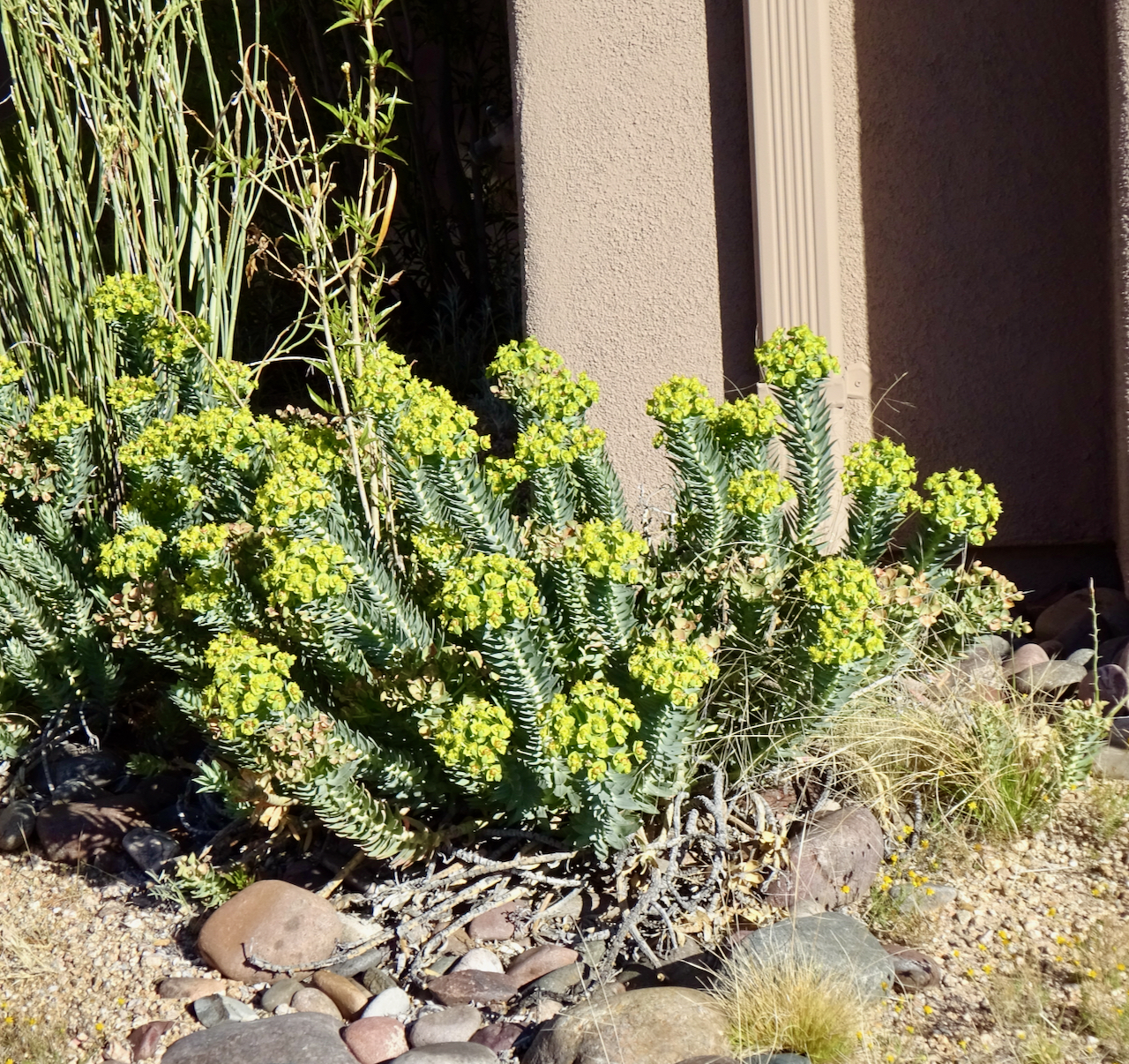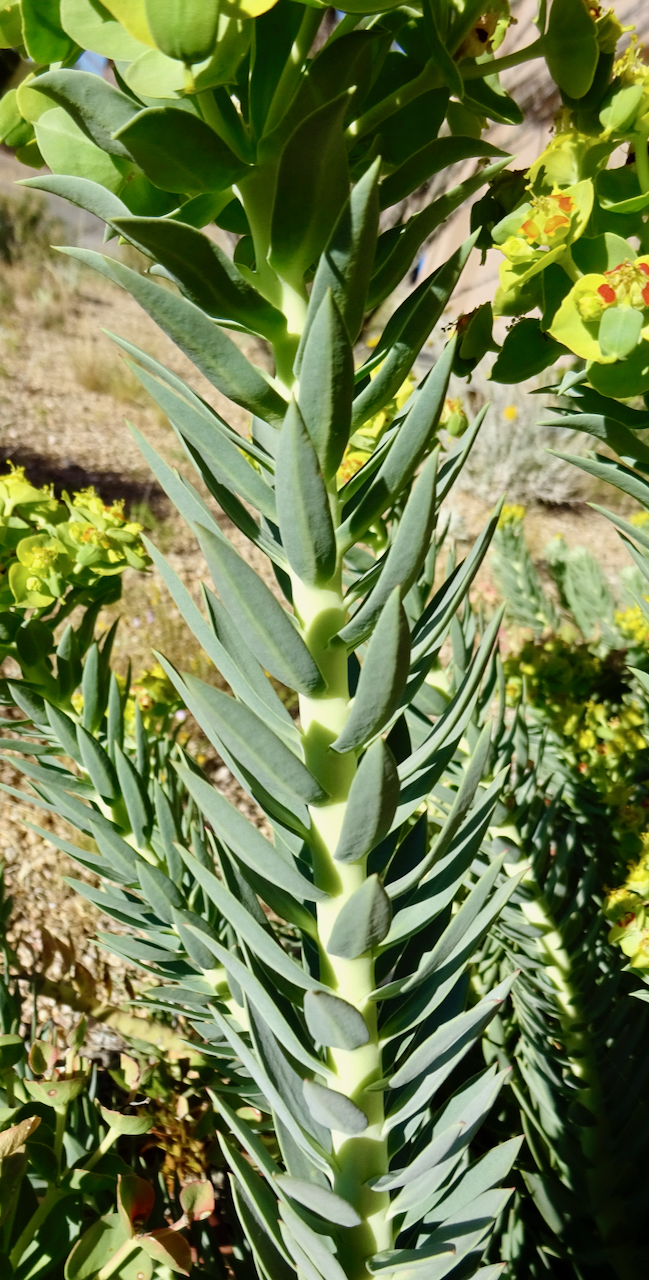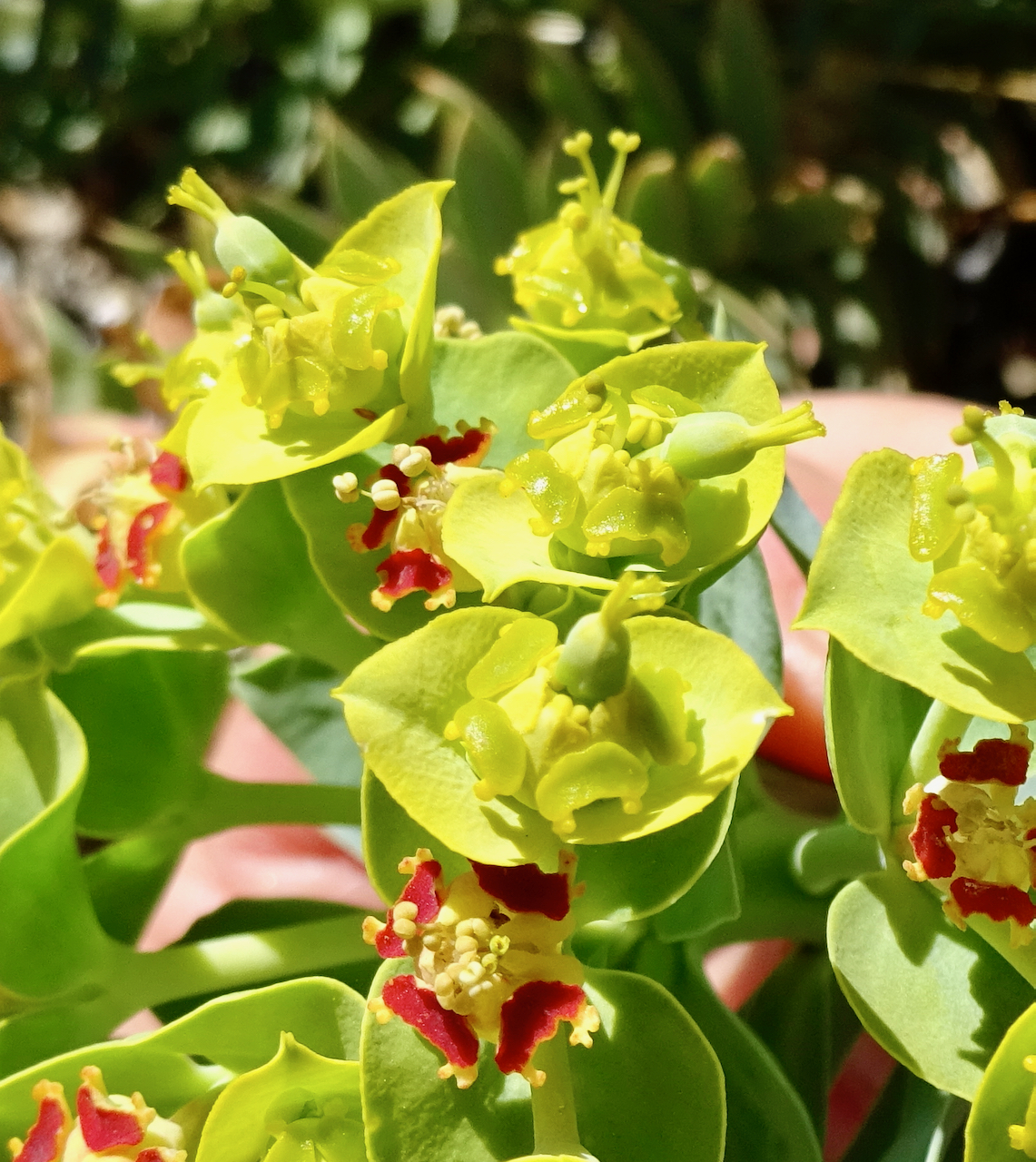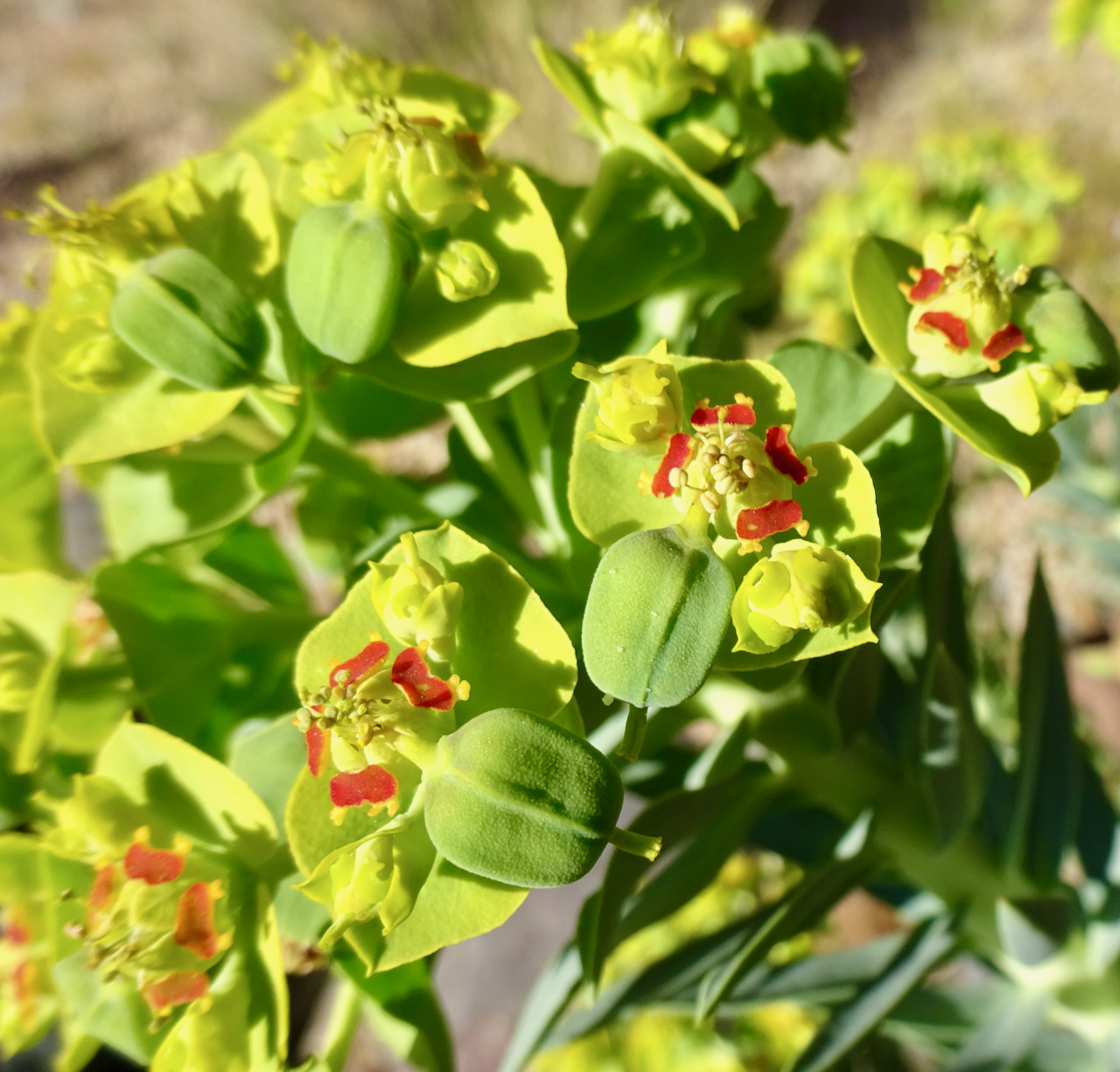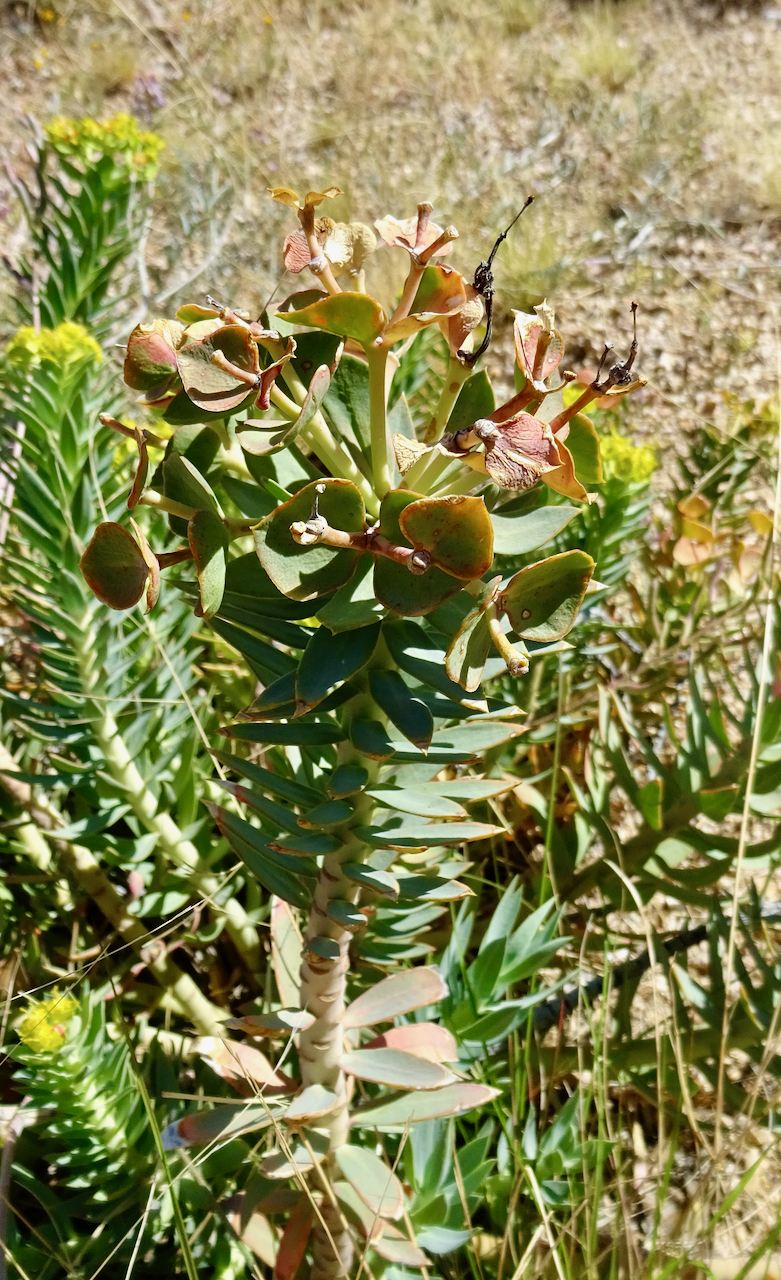Silver Spurge, gopher plant
Euphorbia rigida
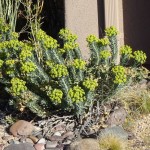
About the Plant
Native to the Mediterranean region, this evergreen plant has showy chartreuse flowers in late winter. Each plant has many stems, some laying almost on the ground, others standing more upright to 1-2 feet.
Grow silver spurge in full sun or light (but not heavy) shade. The lower stalks will often die after flowering. To keep the plant looking neat, cut off dead/dying stems at their base (see Allergy Alert below). Lanky stems can be cut back by half after flowering. This plant will reseed. If you wish to prevent this, remove flowers after they fade.
Allergy Alert: this plant causes contact dermatitis, similar to the rash caused by poison ivy, in sensitive individuals. Wear gloves and long sleeves when handling this plant. Wash tools used on this plant after use.
Wildlife value: attracts bees and other insects. Silver spurge and related plants are often called "gopher plant" because they are thought to repel gophers. Research has not substantiated this claim.
More Information
